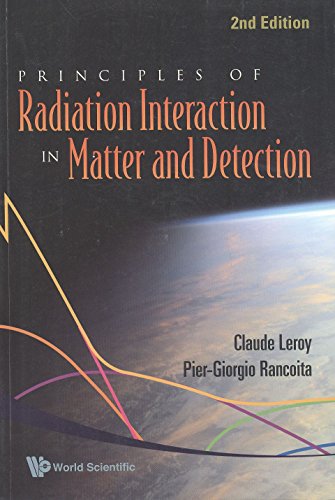Principles Of Radiation Interaction In Matter And Detection pdf download
Par honeycutt angela le mardi, octobre 25 2016, 03:46 - Lien permanent
Principles Of Radiation Interaction In Matter And Detection. Leroy C., Rancoita P. G.

Principles.Of.Radiation.Interaction.In.Matter.And.Detection.pdf
ISBN: 9812818278,9789812818270 | 951 pages | 24 Mb

Principles Of Radiation Interaction In Matter And Detection Leroy C., Rancoita P. G.
Publisher: WS
The reason they took so long to detect is that they do not interact very much with matter. Every seconds, billions pass enables us to detect them. Yes, it tells us there's normal matter — protons, neutrons, and electrons — as well as radiation in the form of photons, and we can theoretically extrapolate that there need to be neutrinos as well, based on what we know . However, due to the interaction of radiation with matter, gamma-ray imaging is plagued by Compton scatter, which degrades image quality and spatial resolution. Image formation is based on the mathematical concept of compounded conical projection. They have no electrical charge, As a consequence of how little neutrinos interact with matter, they can pass through the Earth essentially unimpeded. Thus, effects due to scattered photons should at best be eliminated or at least be reduced [6]. Or maybe it collides either with itself or with normal matter under certain conditions, which would mean that either we should find it annihilating with itself, emitting radiation, or ricocheting off of normal matter, all of which we can detect in principle. Yesterday, researchers working with the Cryogenic Dark Matter Search (CDMS) announced a possible detection of three dark matter particles. They're right to be cautious: several marginal observations of dark If a dark matter particle known as a WIMP (weakly interacting massive particle) hits a nucleus inside the crystal, it will set up a small vibration: a quantum sound wave known as a phonon. "In a nutshell, we believe that new gravity theory will change our view on energy, gravitational interactions, and the structure and formation of our universe," said Shouhong Wang, a professor of mathematics at Indiana University. IceCube uses huge columns of very pure water buried below the ice-sheet in Antarctica to shield the neutrino detectors from the background radiation and cosmic rays. It entails a Radon transform defined on circular cone surfaces in order to express the scattered radiation flux density on a detecting pixel. Usually, a direct detection experiment operates in an underground laboratory to shield it from cosmic radiation and reduce background. All kinds of sub-atomic particles existed together, forming a gas of matter, anti-matter and radiation interacting in the same way as they do in present high-energy accelerators or violent cosmic phenomena like quasars or super-novae. Here at Purdue, we are working on the XENON direct dark matter search.